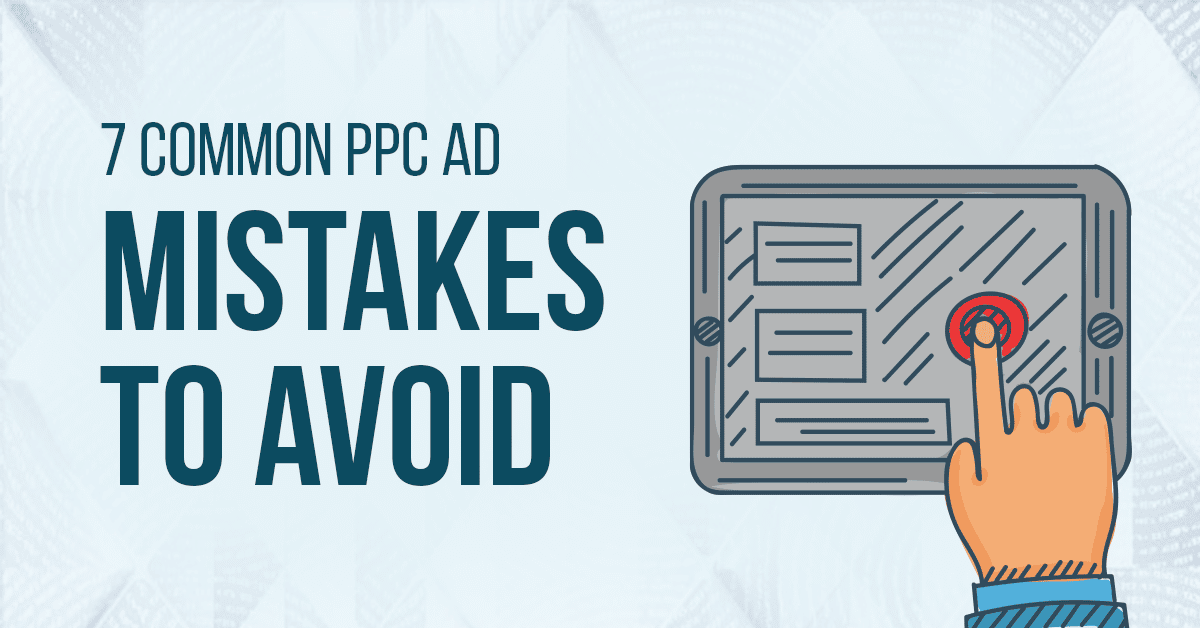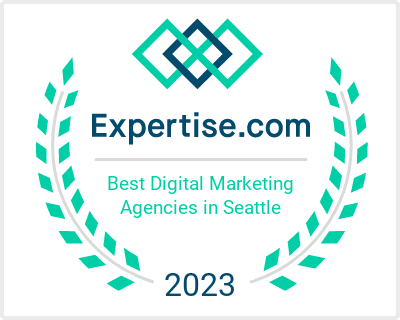7 Common PPC Ad Mistakes to Avoid
Pay-per-click advertising (PPC) is the fastest way to get your product or service in front of your target audience. A good PPC ad campaign generates instant, qualified traffic that turns into paying customers. Let’s talk about 7 of the most common PPC ad mistakes that you should avoid.
Remember that a lack of understanding and experience in paid advertising can cost you a lot of money. An ineffective ad strategy will actually turn away potential customers and potentially damage your brand reputation. Let’s talk more about the other mistakes now.
1. Not Defining a Specific Audience
The purpose of a PPC ad campaign is to show your ad to people who are interested in your products and services. You have to do your research in order to find out who those people are and where they visit online. This is called defining a target audience. You must define your audience or you will waste your ad spend showing ads to people that are not interested in your business.
A quick way to define a target audience is to jot down the characteristics of the people you want to sell to. How old are they? Are they male or female? Where do they live or work? What kind of habits or hobbies do they have? Think hard and dig deep into this. Write down as many demographics as you can.
The more you define your audience, the higher your conversion rates will be. An experienced PPC ad agency like ours will drill down to get your ad in front of the people who are most likely to convert into paying customers.
2. Using Too Many Keywords in Ad Groups
When you are advertising with search ads on a platform like Google Adwords, , you must have a clear keyword strategy. Performing in-depth, quality keyword research is a good first step, but be careful not to use too many keywords in an ad group. Keyword research can easily return thousands of keyword possibilities, but the most successful ad groups focus on a set of core keywords. .
A good target is to have them categorized into ad groups with a max of 5-15 keywords in each group. The biggest determining factor in Google Adwords success is relevance.
For example, let’s say you sell all kinds of generators, including diesel-powered backup generators. It may be easy to pile all of your related keywords into one ad group called “Generators” – but this would be a mistake. Each category and each sub-product group needs to be separated and defined to increase the relevance of those ads.
This is so that if a user searches for a “diesel backup generator”, they will see an ad from the most relevant ad group that has “Diesel BackUp Generator” in the headline. It is more work, but you will see the results in a higher ad performance.
3. Not Defining Campaign Goals
You cannot define the success of a campaign if you have not defined your goals. Are you trying to get more leads, sales, followers, visits, or impression.? Set your goals and performance expectations, then set your budget.
This is incredibly important when it comes to your bid strategy. If you want to raise brand awareness, focus on increasing your impression share. If you want to increase conversions, focus on max conversions. Within each bid strategy, you can define how much you are willing to pay per click. In the target Cost Per Acquisition (CPA) category, you can define the amount you want to pay for each conversion as well.
4. Not Tracking Conversions or KPI’s
In order to measure your campaign’s success, you must be able to track your user’s journey. All clicks will not convert into a sale during the first visit, but this does not mean the user’s journey is over.
If someone clicks your ad, there is always a measure of success simply because they clicked it. You can then track important data like number of clicks, click-through rate (CTR), Google quality score, cost per click (CPC), conversion rate, and cost per acquisition (CPA). These key performance indicators allow you to fine-tune your ad focus.
You are also able to track other important insights like user demographics, time of day, and location of your audience. This data allows you to retarget new ads to those who spent time on your site but didn’t convert into a paying customer yet.
5. Ignoring the Importance of Landing Pages
An ad campaign is only as good as the landing page it points to. The landing page is where the user takes the next step into the sales funnel. This is where conversions are won or lost.
Even if you have the best ad, with the best copy and engaging graphics, it will mean nothing if you are pointing users to an underperforming landing page. A successful landing page will have these things:
- Engaging content targeting the personality or interests of your audience
- A great user experience with a mobile-friendly design and a clean layout that is easy to navigate
- Imagery related to the ad and the product or service you are offering
- Copy that is relevant to the ad by using the keywords from your ad groups
- Copy that speaks to a specific audience, problem, or question – not just the general public or general information
- A strong headline with a clear and immediate call to action listed throughout the landing page
- A lead capture or sales form directly on the page, rather than a button linking to your website
It is important to spend time making sure your landing pages are optimized for conversion before running your ads. The success of your landing page is reflected in your ad’s quality score. If your ads are great but your landing page is poor, your ad scores will decrease, and the search algorithm will be less likely to favor you in the search auctions. Our experienced PPC agency has a kick-ass web design team that works with our PPC experts to create effective landing pages.
6. Relying on Tools and Robots Too Much
Tools and bots can be very helpful in monitoring and managing your accounts, but humans make the final decisions. You are the one that knows your goals and your customers. Use the tools to help you oversee, update, and correct your campaigns. Use manual actions to control and intervene when needed.
Google has powerful AI, but to perform best, it needs a lot of data. We’re talking millions of impressions and months of reporting data. If you are just starting or are trying to scale your paid advertising efforts, relying on automation leaves too much to chance. Split-testing and controlling as much as you can manually is the best way to scale and optimize without breaking the bank.
7. Not Testing Enough
Campaign experiments, also called split testing or A/B testing, allow you to create multiple versions of your ads and compare the results. You absolutely must conduct regular testing to optimize your campaign budgets, keywords, target markets, and bids.
In a split test, you create two ads for the same product that will run at the same time. Each ad has different variables and the goal is to see which ad converts the best.
Some variables to test:
- Ad creatives – Use two different images to see which one people are more drawn to. An example would be to run one ad image with a male model, the other with a female.
- Headlines – Different headlines hit people differently. “Free Widgets” may draw more attention than “Get a Free Widget”. You won’t know which headline your audience likes best until you test them both.
- Descriptions – Set up two different descriptions for the same product. Create ad copy in one ad that highlights the features of the product, and another with ad copy that highlights the benefits. It will be easy to see which one catches more action.
- Target audience – Define and refine the audience with a test on two targeted audiences. Does your product draw more Millennials or Gen Xers to it? Are renters or homeowners more interested in the ad? Did you get more traction from fashionistas or foodies? Once you know this, you can tweak your ad creatives and write ad copy that speaks to your most popular audience.
- Call to action – Are people more likely to click “call now”, “learn more”, or “get started”? Try different calls to action to define the one that will draw more clicks and conversions.
Conclusion
Results from PPC advertising are trackable, measurable, and get you in front of the right people in real-time. It gives you great control over your ad spend and helps to instantly improve your brand awareness and reach. The right ad campaign drives sales or hot leads.
Make sure you avoid these common mistakes when creating PPC ads:
- Failing to define the right audience to target
- Not splicing your keywords into hyper-specific groups
- Never knowing what your goals are
- Not properly tracking KPI’s
- Having ineffective landing pages
- Relying on “autopilot” to give the best results
- Not conducting A/B testing
Ready to start PPC advertising for your business? Go ahead and book your free PPC strategy session with our experienced PPC ad agency now. We’ll get you set up and on track for paid advertising success.
PPC PPC Advertising No To The Quo



